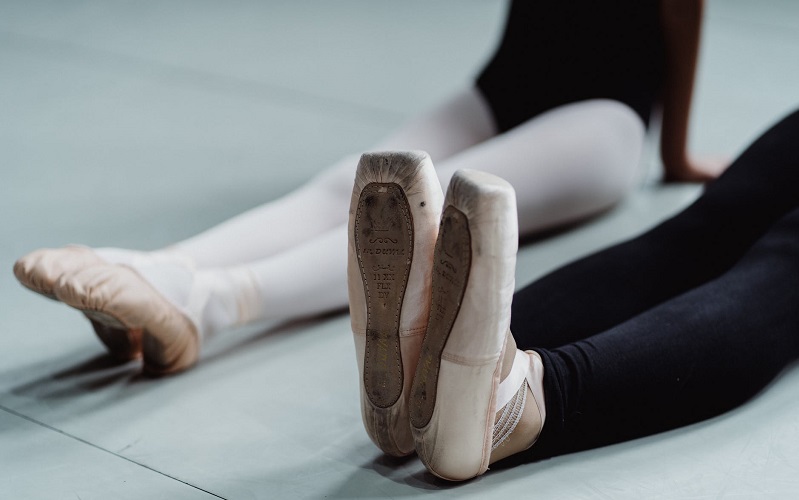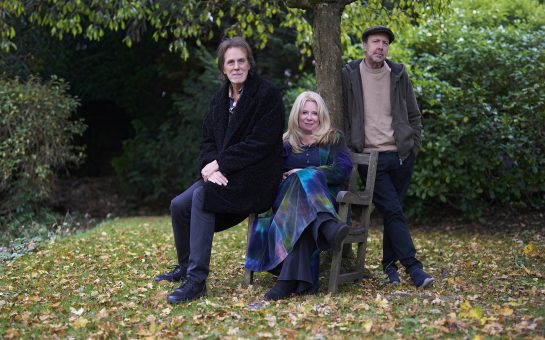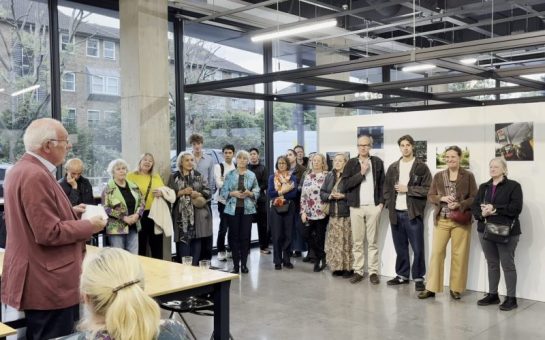Most people remember an activity they loved as a child – a sport, an instrument or artform that kept them busy, opening their eyes to a world of creativity.
Though many drift away from these activities over time, some stick with them and they develop into lifelong passions.
This is the case for 27-year-old Ruth Essel, founder of Pointe Black, a Black-owned and run ballet school based in Vauxhall and Battersea.
Essel said: “I would have been a completely different person if I didn’t do ballet.”
The school challenges the stereotypical image of a ballerina by focusing on the diversity of its dancers, who are encouraged to attend regardless of their shape, size or race.
The awareness of the need for inclusion is becoming more common within the ballet and dance industry.
Early dance experiences
Typical depictions of a ballerina are tall, slim European women in pink leotards with straight hair tightly pulled into a bun.
These images are being keenly disrupted however by people like Essel, who recognise how exclusionary they are to those who cannot identify with them.
Essel began ballet when she was three, explaining that her mum wanted to give her something to do and steer her from ever becoming “another statistic”.
Recalling her early days as a ballerina, Essel spoke about how she was perceived by teachers and fellow dancers in her classes.
Her most prominent memory from the age of 10 is a teacher insisting that she take down her new hairstyle which was braided up into a bun as it was not uniform with everyone else’s.
She said: “The girls would ask if I was dirty, and if I ‘came out like that’. I’d have teachers saying my hair isn’t like everyone else’s – why isn’t it dead straight?
“Afro hair and braids weren’t understood by teachers either, they would line us up and say look, it looks different, I can’t have that on stage.
“For a long time I had a love-hate relationship with ballet. But then I realised it wasn’t the art – the art is amazing and there are so many aspects to it.
“So I decided that I wasn’t going to allow anyone to go through the same experiences that I did.”
This was Essel’s inspiration for Pointe Black, a name that came to her three years ago.
Pointe shoes
Pointe Black is reminiscent of the pointe shoes worn by ballet dancers, and the school’s intention to include Black dancers and others who aren’t as easily accepted within other ballet schools.
Pointe shoes help dancers balance on the tips of their toes while dancing and performing pointe work, while also providing support to remain on their tiptoes for extended time periods.
The box at the toe of the shoe is flattened at the top, and this has direct contact with the floor when a dancer is en pointe.

As common as they are to an audience’s eye, there is more than meets the eye with these shoes.
To elongate and streamline a dancer’s body, their shoes must match their skin tone as it creates uniformity between them and whoever they are dancing with, especially when tights aren’t being worn.
There has been increased conversation around the lack of pointe shoes available for Black and Brown ballet dancers, as they are conventionally made in a pale pink colour to match the skin tone of a white dancer.
Dancers commonly “pancake” their shoes, a process where skin-tone foundation is rubbed onto the shoes with a sponge to make them more suitable to skin tone.
For Black and Brown dancers, this is often the only way to match their skin tone with their shoes as their default colour contrasts with it.
Essel recounted witnessing Black dancers being undermarked by examiners due to their lack of access to suitable pointe shoes, as their performances appeared less streamlined despite being as talented as white counterparts.
Dancewear manufacturer Freed of London partnered with Ballet Black in 2018 to tackle this issue by manufacturing pointe shoes that match deeper skin tones.
Although useful, change at this time shows how behind the dance industry is in terms of Equality, Diversity and Inclusion (EDI).
TIRED calls for change in UK dance industry
Stacey Green, a mother, teacher, dancer and founder of the TIRED Movement, utilises her 25 years of experience in the dance industry to spark changes in the private dance sector.
She founded the TIRED Movement last year as Black Lives Matter (BLM) was highlighted in the wake of George Floyd’s death.
She said: “It made me think about myself as a mixed race woman with a Jamaican heritage, and the things that were glaringly obvious and needed to be changed in the dance industry.
“I felt it was time to voice how I and other people felt for many years but didn’t have the platform to do so.”
The TIRED Movement is a social enterprise that began as a webinar with industry professionals including choreographers, examiners, teachers and Ginny Brown, CEO of the Imperial Society of Teachers of Dancing (ISTD), a UK dance examination board.
It voiced the industry’s EDI shortcomings in the effort to highlight areas that require change.
Regulation
As of today, there is no regulatory body for dance schools in the UK, or for EDI within these schools – a dance teacher can qualify and set up their own school, where OFSTED regulation is optional.
However as of September 2020, you can no longer qualify as an ISTD teacher without in an EDI module as a result of the TIRED Movement’s work.
Green added: “The dance industry is very disjointed. You have the classical sector, the musical theatre sector, the commercial sector and more, but they don’t speak to each other.
“We always felt that there needs to be a continual line in the education of the next generation of artists, performers dancers, singers and actors, etc. There needs to be an invisible line we all adhere to.”
The movement aims to create this line by bringing organisations and members of the industry together as a community, and to act as a directory that signposts people to other organisations within it.
Another area of concern is the presence of Black examiners at dance performances.
Green said: “There is not one Black examiner or judicator in the British and International Federation of Festivals (BIFF) out of 240.
“I have been teaching for over 25 years and I’ve never seen a Black judicator – not one that looks like me.
“How does a Black or Brown skinned dancer come into class, take an exam and think they could be an examiner? They don’t because they don’t see it.
“If you don’t have diverse boards in vocational colleges or within different organisations, how are you going to make those changes?”
The ISTD invited the TIRED Movement to be part of its racial equality steer group in an effort to assess its EDI, racial, disability, and gender equality.
It also delivers Continuing Professional Development (CPD) training to ISTD members, with an introduction on how to start conversations about necessary changes the industry.
It is also working with the AQA and GCSE Dance curriculum as they make improvements for students.
Later this year, the movement will hold workshops to help students build confidence, helping them to retain their identity within the dance industry.
Ballet as a comfort
London-based ballet dancer Kadeem Hosein described ballet as a part of his identity, and something he finds comfort in as he knows it on an extremely personal level.
Born in Trinidad, be began ballet at the age of nine and continued developing his craft after moving to London.
Here, he learned from professionals in Pineapple Studios, Danceworks and the Central School of Ballet after his bachelor’s degree.
He said: “To be able to move to London where there’s so many people who have professional experience dancing with massive companies like Royal Ballet and Dutch National Ballet was a different experience.
“I grew a lot more in the space of two to three years than I ever did back home.
“When I came here and started taking classes, everyone in my class bar one other person was white, but I never felt like I was looked at differently or not given as much attention.
“But I know that at larger ballet companies, Black dancers do struggle to be seen or accepted with having to wear pink shoes and tights instead of brown, skin-coloured ones.”
Hosein performs in a video series named On Pointe in Public, where he dances on pointe around London locations.
He explained that talent must be put first in dance, and it should be prioritised over appearance and aesthetic.
There are many Black male ballet dancers coming up through the ranks, being the representation that Essel and Green advocate for.
Hosein added: “They are there. You just have to look for them. Hopefully soon you won’t have to sift through to find them.”
Active for 20 years, companies like Ballet Black also demonstrate how inclusivity is the only way to transform the arts into the industry it was always meant to be.
A future of diversity
Essel, Green and Hosein represent various stages of change in the dance industry.
Though the journey may be gradual, the future for Ballet in the UK is bright with Essel and Green’s work in public and private dance sectors.
As a dancer, Hosein is proof that inclusivity is possible and creativity through dance is freely expressed when there are less barriers in the way.
Pointe Black holds classes every Saturday, with the G-troupe classes for children and babies where the youngest is 18 months old, and the adult class where the oldest is currently 65 – there is no age limit for dancers at the school.
Essel hopes to open more Pointe Black schools around London.
She added: “I don’t want to do this by myself. I want schools, association boards and professional ballerinas with me. It’s not about me – it’s about everyone.”
You can register for a Pointe Black class here: Dance Classes | Pointe Black
Discover the TIRED Movement’s projects here: Projects – Tired Movement




